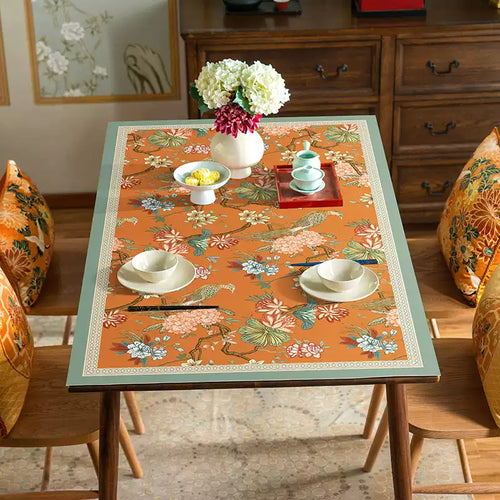"A Thousand Li of Rivers and Mountains" (Qian Li Jiang Shan Tu 千里江山图) is not just one of China's top ten famous paintings; it is a miracle of art history. Created by the 18-year-old prodigy Wang Ximeng during the Northern Song Dynasty, this 11.9-meter long scroll is celebrated for its breathtaking blue-green landscape style (shan shui).
 The staff were carefully and cautiously unfolding the scroll.
The staff were carefully and cautiously unfolding the scroll.
But why do visitors queue until midnight at the Palace Museum just to catch a glimpse of it? The answer lies in its tragic beauty, rare pigments, and the legendary story behind its creation.
Who Was Wang Ximeng? The 18-Year-Old Genius
Wang Ximeng (王希孟) was a court painter in the Northern Song Dynasty. A student of the art-loving Emperor Huizong, Wang completed his only surviving work, "A Thousand Li of Rivers and Mountains," at the age of 18 in 1113 AD. He passed away shortly after, leaving behind a legacy that has endured for a millennium.

The painting measures 1191.5 cm in its entirety.
In April 1113 AD, Wang Ximeng worked day and night. He wasn't just painting; he was answering a challenge. Emperor Huizong had established a rigorous painting academy, personally mentoring talented youth. Recognizing Wang's potential, the Emperor taught him directly.

A part of "Listening to the Qin" painting, created by Emperor Huizong, is now housed in the Palace Museum in Beijing.
In return, Wang poured his soul into this scroll, taking nearly half a year to complete it. The result was a painting that delighted the Emperor with its meticulous detail—from the surging waves to the humble fishermen casting nets.

At the painting academy studio
Why is "A Thousand Li of Rivers and Mountains" Unique?
Unlike the stark black and white ink typical of literati paintings, this artwork is a Blue-Green Landscape (Qinglü Shanshui).
-
Precious Pigments: The vivid colors come from precious minerals—azurite (blue) and malachite (green). These minerals are vibrant but fragile.
-
"A Thousand Miles in a Foot": The composition is vast yet detailed. It depicts rolling mountains, rural villages, and bustling markets. Every centimeter holds a story, embodying the artistic philosophy of finding the macrocosm within the microcosm.
-
Durability vs. Fragility: Because the mineral pigments sit on top of the silk, rolling and unrolling the scroll can cause the paint to flake. This is why it has only been exhibited four times in the last century at the Palace Museum.






From Ancient Scroll to Modern Fashion
The fragility of the original means most of us will never see it in person. To bridge the gap between ancient history and modern life, SinoCultural has reimagined this aesthetic.
By extracting the iconic blue and green tones, we have launched the Chinese Art Series.
-
Wearable Art: Our handbags and scarves capture the "mountains and rivers" motif.
-
Cultural Statement: It’s not just an accessory; it’s a piece of the Northern Song Dynasty you can carry with you. Chinese Art Handbags & Purses: Traditional Landscape Painting Style
The Historical Context: Emperor Huizong's Vision
Emperor Huizong was a unique figure—perhaps a poor ruler, but a brilliant artist. He posed poetic exam questions like "Stepping on flowers, returning with the fragrance of horse hooves," pushing painters to depict feelings rather than just objects.
Wang Ximeng’s success was a validation of Huizong’s aesthetic vision: grand, colorful, and poetic. When the Emperor saw the finished scroll, he deemed it the pinnacle of his academy's output.

FAQ: Common Questions About the Painting
Q: Where is "A Thousand Li of Rivers and Mountains" located?
A: It is currently housed in the Palace Museum in Beijing. However, due to conservation concerns, it is rarely on public display.
Q: What materials were used in the painting?
A: It uses silk as the base and mineral pigments like azurite (for blue) and malachite (for green), along with ink.
Q: How big is the painting?
A: The scroll measures 1191.5 cm in length (approx. 11.9 meters) and 51.5 cm in height.


















































